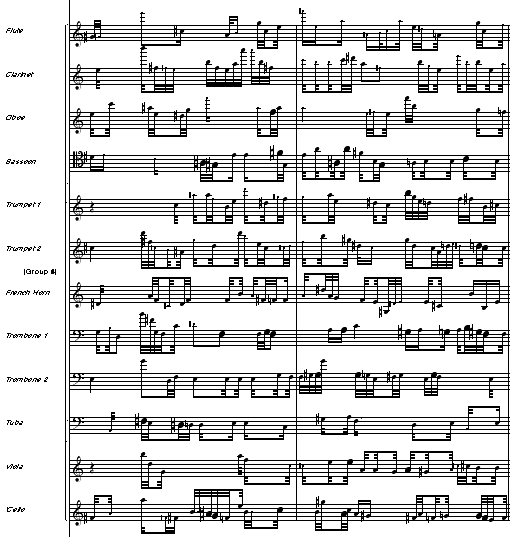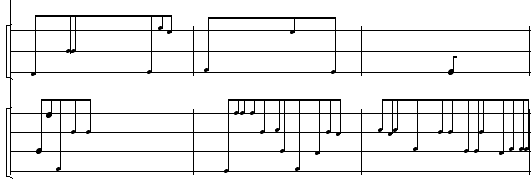2. Akt – 1. Szene
Die Zuschauer wollten eine ErklärungWhile the first act deals more with the events leading up to the crime, the second act introduces a new element: the element of contemplation and self-reference. Brasch describes the unsympathetic reaction of fictitious spectators being exposed to the very same opera that is unfolding in front of the real audience. For this scene I invented eight short comments and exclamations (partially based on reactions I received from opera people and radio editors before the opera was finished). In analogy to the composition method applied to the entire opera I performed an FFT on the texts spoken by mezzo-soprano Annette Kleine and myself. Again, I derived the rhythmic and melodic material from these analyses, albeit without time-stretching. The material was translated into musical notation using a cascade of algorithmic processes. Two types of textures are discernible: One using the spectral content in a quantization of 62.5 msec, and another emplying the rhythmic structure formed by the temporal envelope of the spoken texts. Since playing 32nd notes at quarter equals 120 seemed an almost impossible task I removed the shorter pauses from the music and asked the musicians to quasi improvise their parts. The rhythmic sections performed by the two percussionist grant even more freedom: the choice of instruments and the exact rhythmic elaboration of the music written in space notation is up to the performers themselves. 2. Akt – 1. SzeneThe scene is based on the syllables „k-ei-nen“ and, therefore, consists of three parts. The first part carries over from the previous intermission by using the typical background noise, interspersed with the rendering of those eight comments by professional actors Ulrike Rehbein and Oliver Fobe, so that the real intermission seems to continue well into the opera. The second part features the libretto whispered (and thus made unintelligible) by the choir, whereas the third part consists of a succession of the „speaking“ of the comments by the orchestra, the percussionist and the electronics. The singers, now acting as if they were the audience, react to this by clapping, laughing and cheering–only the real audience doesn’t seem to get it!
|

